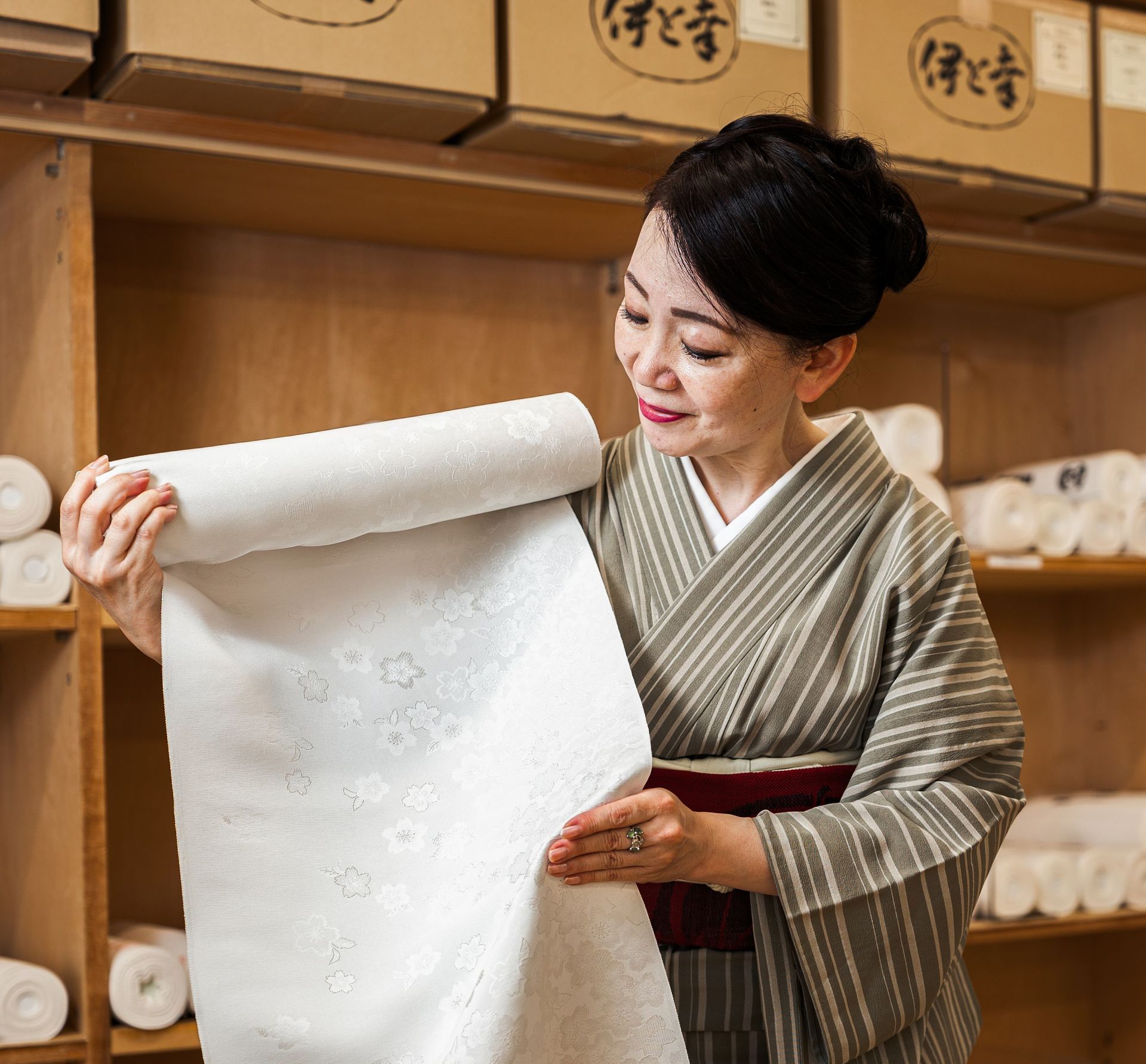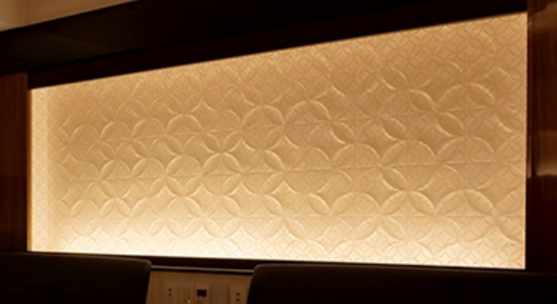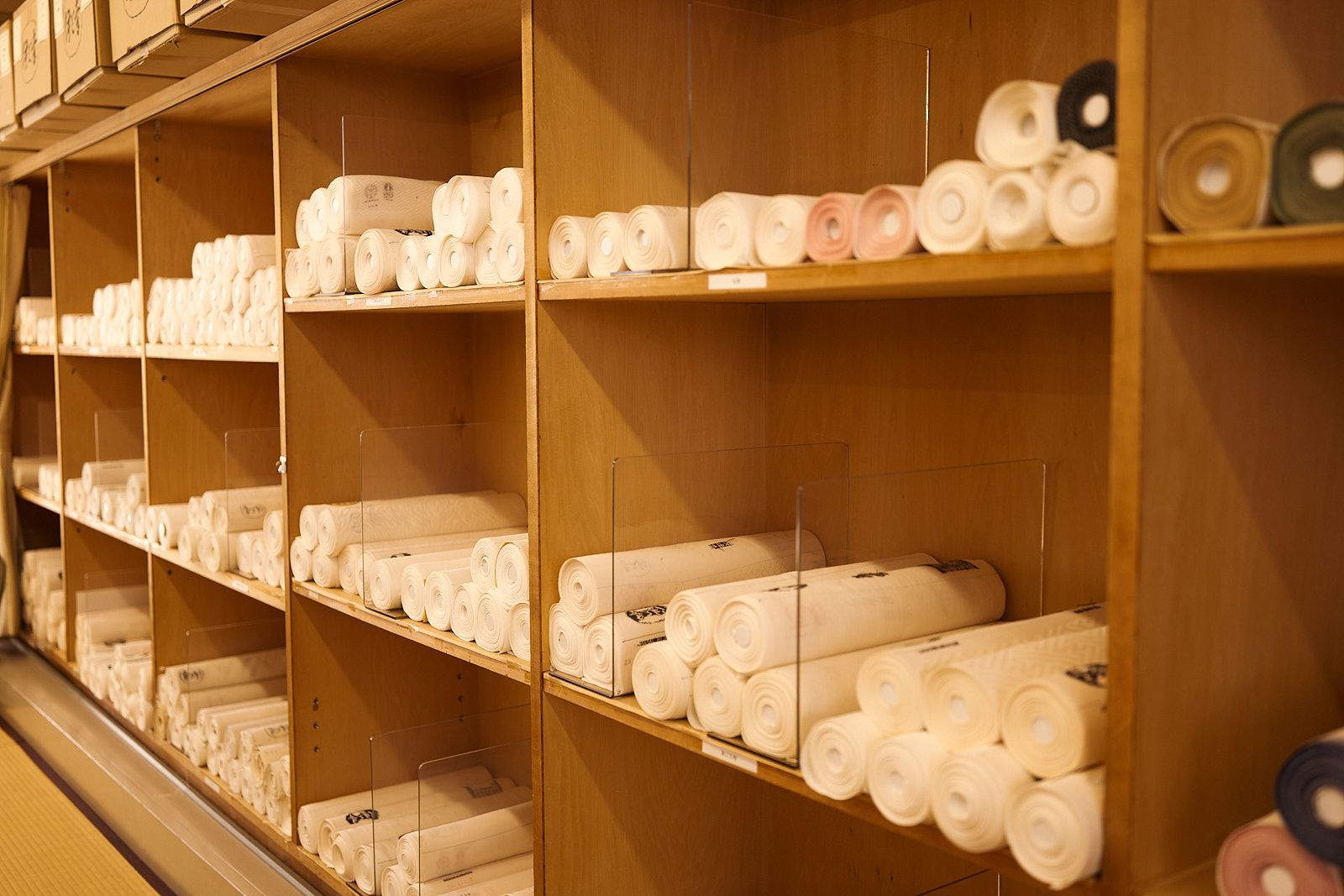A highly complex yuzen dye process that begins with an undyed white base tanmono silk roll (typically 40 cm wide x 13 meters long) which has been woven in a subtle pattern. The outline of the peony design is then painted onto the silk with a fine brush using a water-based dye. Then the outlined leaves and flowers are filled in with a resist paste. The piece is then dyed black using small brushes. The resist paste is removed by steaming, then the flowers are dyed with white oyster shell dye. Next, each leaf and petal is further dyed by a small brush with a color gradationshading technique. Then a liquified gold is applied to the outline of the leaves and petals. To achieve the variegation in gold-accented areas, a very loose gauze (dyed in persimmon juice to give it strength) is affixed to the surface of the piece, over which gold leaf is applied. Pulling the gauze off results in a crackled effect.










